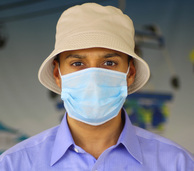|
I still fondly recall my stay at the Peninsula Hotel Shanghai earlier this year in March. It gave me the impression that the hotel was a neat blend between the contemporary design and retained 1930s feel of Shanghai’s hey days’ (when it used to be known as the “Pearl of the east”). In contrast to the Peninsula Shanghai, the 525 room Peninsula Beijing has a completely different feel to it altogether. Apart from all the usual signature Peninsula amenities and in-room facilities offered in every Peninsula Hotel around the world, the Beijing Peninsula differs enormously in terms of architecture, ambiance, its classical interior décor and the amount of shopping one can do inside the hotel. It is the only other Peninsula hotel on mainland China (and part of the “Hong Kong and Shanghai Hotels’ Ltd), and is rather more well established as well than its younger and newer counterpart in Shanghai. This magnificent picturesque hotel has been through 4 renovations since its opening in 1989- and 2003 was the most recent one where over US$34 million were spent to upgrade its facilities.
Originally known as the “Peninsula Palace Hotel” until 2003, The Peninsula Beijing has become a renowned landmark since its opening in March 1989. Located in the heart of Beijing’s glamorous Wangfujing area, around 5 minutes walking distance from the bustling Wangfujing Street itself, and around 15 minutes walk from the Wangfujing Metro station, the hotel reflects a careful blend between the innovative touch and the luxury that it stands for. In actual fact, most guests will tell you that with the change of the times, the Peninsula Beijing is fast becoming a hotel that requires itself to constantly provide some sort of innovation its guests. It’s the small things that make the big difference to a guests stay in the 21st Century (and beyond). Such as the luxury of having to use a Fax Machine and the international direct dial (although the Beijing Peninsula does not feature of free International calls by Skype like the Shanghai Peninsula). The whole Peninsula experience starts with a personal pick up from the airport (VIP Pick up also available on request) with one of the Hotel’s signature Rolls-Royces’ or the BMW 7 series automobiles- and the same service is available on checking-out. The driver will take you straight to the plane (for those flying with First Class/Business Class), or to the terminal building. The rooms are slightly smaller in size compared to the other Peninsula Hotels’, but it must be bore in mind that this glorious hotel has been operating since 1989- and in those days it was perhaps the most luxurious hotel operated by a foreign company in the whole of China. This was well before any of the Peninsula’s competitors’ entered the Mainland China market. To this day the tradition still looms in the air. The customer service, the maids dressed in period uniform, the Rolls Royce Service and the general feeling of the hotel that gives a message of “Yes, I am at the luxurious Peninsula” is still the same as it was in 1989. Toiletries, as with all other Peninsula Hotels in China, are provided by “Davi”- including their impossibly luxurious hand cream. One of the key things that impressed me was the polished level of languages spoken by the native Chinese staff except English. These included French, Spanish and even business conversational Italian. Now that is a bit of a rarity in China- you’d be lucky enough if someone speaks good enough English let alone any other language. The Peninsula Beijing Club looks and feels like a gentleman’s club. There is a strict dress code of semi-formal to formal wear with no jeans, shorts or trainers. The view may not be that fantastic, however the service and the environment is calm and soothing. Unlike the kind of “Clubs” that some of the other five star hotels’ offer, the club house at the Peninsula is a real club house. By this I mean that it is just the right place where one can relax and while away their evening in the company of good friends/colleagues and a good wine in hand. Normally such clubs are the nearest thing comparable to Gentleman’s Clubs such as the “Victory Services Club” (London) or the “American Club” (Hong Kong) that are frequented by airline captains’, four-star generals’, actors’ and other VIPs’. Its how a club should be- not with numerous amounts of food (it’s not a restaurant) or with the rest of the hustle and bustle that one gets in a noisy eatery. On my trip I even managed to bump into renowned Chinese actor, Mr. Guo DeGAng (郭德纲), for a nice dinner and chat. The Club can be used by anyone, however is only complimentary for those staying at any one of the Club rooms on three dedicated floors of the hotel (and the 57 Suites’). The focus is mainly for those who are business minded- and the general conception is that everything should be smooth. This is true from everything ranging from private checking-in and checking-out to the breakfast service (guests can have a pre-assigned Breakfast at short notice if they are in a rush). The only thing is that some elements of the service may seem very traditional for those that are used to residing at more modern five-star hotels’- such as the amount of dishes on offer are quite limited. One thing that people must remember is that the Peninsula is all about luxury and class rather than the amount of service. It’s the quality, and not about the quantity as they say. One of the finest innovations of the Peninsula Beijing is the “Academy” that allows guests to enjoy any one of the 10 signature experiences’. There is something for everyone- including Children. Some of the amazing experiences include “Chinese Contemporary Art”, “Kite making with a Kite Master*” and “Chinese Dumpling Making**”. The latter two have to be my favorites. The “Kite making experience” allows people to visit a real Kite Maker in their Hutong courtyard house, and then after the kite is made you take it down to Tiananmen Square to enjoy this traditional activity. The “Chinese Dumpling Making” allows the guest to be given a personal tutorial on the history of the Chinese Dumpling by the Peninsula Chef, and then allows the guests to learn how to make a perfect Dumpling. Highly recommend that you make a reservation two days in advance to avoid disappointment. Whether you want to relax, swim, exercise, shop (over 50 shops in the renowned exclusive Peninsula Arcade) or eat like there is tomorrow at the finest of Beijing’s restaurants’ then the Peninsula has it all. In terms of having a massage or a swim, the Peninsula for sure has a deeply personalized spa experience like no where else in the rest of this part of the capital. Opened in 2008, the 1370 Sqm Peninsula Spa by ESPA forms part of the third-floor health and fitness facility at the Peninsula Beijing with 12 state of the art treatment rooms that include all the relevant treatments to cleanse the skin, relax and soothe aching muscles and preparing the body to become more fresh and energetic. The experience of the Spa doesn’t just stop here as there are a wide variety of treatments for men and women available on request. Both men and women have separate thermal suites that include a steam bath, sauna, lifestyle massage shower and an ice fountain. Don’t be disappointed if you feel that the Peninsula Beijing does not seem to be as contemporary as, say some of the other five-star hotels’, or if the rooms are a bit smaller (except of course in the HUGE Suites)- because it really isn’t meant to be either. The clientele at the Peninsula are different, perhaps more affluent and perhaps not so much of the business type. The vast majority are celebrities, people on holiday or those who just prefer to enjoy life in Beijing at the high end. One of the key features and memorable experiences I would definitely recommend is the impossibly scrumptious food served at the Huang Ting. Whatever you do, and whatever you eat, just make sure you don’t go away without trying the signature Beijing Daiquiri. An amazing combination of banana, vodka, lemon Juice, triple sec, curacao and a quick dash of Mao-Tai; the Beijing Daiquiri will not only blow your mind away, but will perfectly round up your stay to be a memorable one at the Beijing Peninsula. * 2 Hours cost RMB 1250 per person (Prefer Minimum 2 persons) ** 90 Minutes costs RMB 880 per Person Now, when you are in Beijing there are three places one should not even think about leaving without seeing or trying. The first two are the Beijing Great Wall and Tiananmen Square. The third one has to be a famous eatery where you can try some delicious authentic Peking Duck. In a similar fashion a trip to the luxurious Peninsula Hotel in Beijing is not complete without going to the 140-seat Huang Ting Restaurant (it really isn’t) - but that’s if you can find where it is. Rather unusually it’s tucked away in the basement floor of the Peninsula Hotel among some of the finest boutique shops in Beijing selling luxurious branded clothes. Not really the kind of environment one would expect a luxurious restaurant to be in. However, the good thing about this is that it does provide the Guests with a bit more privacy and space to relax and enjoy their meal. The Huang Ting was opened in 2003, rather novel compared to the Peninsula Beijing itself which was opened in 1989. Guests are welcomed to the Huang Ting, which is arguably Beijing’s best Cantonese eatery, with the sight of a huge bamboo bird cage, and a set of Tigers’. It’s perfectly located just around a 15 minute walk from Tiananmen Square, especially for those who are not residing at the hotel and just want to experience the food.
Prior to entering an eatery, every guest has their own stereotypical thoughts and expectations of what they want to hopefully see and eat- and perhaps how to spend their time. The impossibly beautiful “Huang Ting” is no different. After all it’s a five star restaurant situated in a traditional five star hotel right in the heart of the Capital of China- and one would expect a high level of five star service. But what’s different about the Huang Ting? I suppose the remarkable irony of the Huang Ting is that its contemporary design and décor devised by Chhada Siembieda and Associates of Hong Kong is based entirely on the settings of a traditional noble courtyard house - which is fast being a dying breed these days. Soft and slow music of the 8- stringed Zheng can be heard in the background- almost the feeling as if you are in a traditional tea house. Don’t be shocked to see a hint of the past here- grey brick walls taken from the original Hutongs’, slated and aged Pine floors. Another most unusual feature of the restaurant is the splendid pinewood furniture that derives from a large 200-year old mansion in the famous canal town of Suzhou (near Shanghai). There are small bird cages hanging from random places of the ceiling. Fine Mahogany dominates the four VIP Dining rooms (one of which I had the gratification of occupying during my experience). Waitresses dressed in attractive Red Rose colored Qi-piaos’ are on standby to assist you. Customer service is immaculate- the staff are also able to converse in acceptable levels of English. The Huang Ting has Feng Shui elements embedded into its design, with a water feature and waterfall panels inside, and a special “jumping fountain” visible outside the restaurant. I commenced my eight-course gastronomical experience by being introduced to the fabulous drinks list that contained a nice blend of wines (Chinese and Western), cocktails and an assortment of other alcoholic and non-alcoholic drinks. I opted to go for pure authenticity in terms of the design and name of the drink- the Huang Ting Cocktail. Deep shades of Orange and Yellow blended in nicely with the Pineapple, Lemon and Chinese Red Wine. There was also the Beijing Daiquiri- an amazing combination of Banana, Vodka, lemon Juice, Triple sec, curacao and a quick dash of Mao-tai. The starter could not be much more vibrant than having three different types of flavors’ in one dish. The “Combination of BBQ ell, jellyfish and Spring Roll” (鳗鱼拼海蜇春卷) dish is the perfect way to start the adventure at Huang Ting. The slippery Jellyfish, the slightly chewy BBQ Ell and the ridiculously crispy Spring Roll with its fine Vegetables went well with the Huang Ting Cocktail Drink. With this meal I decided to opt for the “2 Up Shiraz” (South Australia) Red Wine. Not too sweet and not too bland either. In actual fact it went perfectly with the crispy Beijing Duck. I am actually intimidated by the more adventurous of dishes that are sometimes presented in restaurants across China. Mind you, it was my first time to tuck into the next dish that the chef de cuisine came up with- “Hot and Sour Shark’s Fin Soup with Scallops” (鱼翅带子酸辣汤). I love seafood (I really do), but believe it or not I had never tried Shark’s Fin Soup before. Just the thought of seeing a Shark was lurking at the back of my mind while I was sipping the spoonful of this impossibly mouth-watering consommé. I would eat this again, and again because the beauty of this dish was that the Scallops were carefully designed to look like sea shells. The attention to detail and presentation was amazing. Another work of genius by the chef-de-cuisine came upon with the “Wok fried river Prawns with celery and X.O. Sauce” (X.O酱西芹大虾球). It’s not often that you get X.O. Sauce flavored into a Chinese meal (we hear a lot about Soy Sauce though). The most memorable experience of this restaurant has to be the live cooking of the exquisite Peking Duck right in front of you. You are in Beijing, in one of the best restaurants around and it would be a great pity not to try this signature dish. The guests have the pleasure of choosing a roasted Duck prior to it being carefully prepared and served in front of your eyes. Note the white gloves worn by the chef- a sign of how clean and fresh the food should be when served. For one person, 4 “Duck rolls” are prepared – these consist of a rolled Mandarin Pancake that contains generous amounts of the crispy Duck meat blending in well with the spring Onions pressed onto the rather thick Hoisin sauce. Continuing on with the eating experience, I was wondering if I had the stomach to take all of this food. The good thing is that the portions are just fine- not too much and not too less either. Next came the brightly colored “Pan-fried cod fish” (干煎银鳕鱼). This dish projected the true Cantonese flavor that the Huang Ting is renowned for. There was a generous helping of Soy Sauce and a dash of a red pepper going across the Cod Fillet. Just sensational. With a dish like this, it would be wrong not to spend around a few moments just taking in a deep breath with each bite and absorbing the flavors’. Having just had eaten a fully crispy Peking duck, I was wondering if there was any need for any more duck, but let be surprised I was treated to a generous portion of “Diced Beijing duck and asparagus in black pepper sauce” (黑椒露笋炒鸭粒). Not too bad but perhaps a bit more Black pepper than one would like to have- though it is known that in Cantonese food the more black pepper the better it is for the body (keeps the doctor away and so on). Fresh fruit, fish and vegetables are the core elements that make up any culinary experience come alive- even more so for Cantonese food because most of the Cantonese food also contains other snippets of meat. The pure vegetarian “Braised bok-choy (Chinese cabbage) with black mushrooms” (三菇扒小棠菜) was a sheer delight to have, and I was relieved to have it. Not that I am a vegetarian, but for those who are Vegetarian this dish would do you wonders because it is not easy to find such high quality vegetarian dishes in China. The “Bok-Choy” was not too large and just right for the mouth. I say this because in most restaurants the “Bok-Choy” is just too large and difficult for foreigners to bite at- and it looks ridiculously comical (and messy) when a foreigner tries to eat Chinese food. Cantonese food relies heavily on seafood and fried rice noodles (unlike the noodles that are offered in the north of the country), and so to continue this authentic trend, a fabulous presentation of “Xia-Men fried rice noodle with shrimps” (鲜虾厦门炒米粉) was offered. Not as oily as some of the dishes that are offered in some restaurants across the Guangdong region, and especially with the rich flavor of the large Shrimps, this dish was to die for. As with all Chinese meals, the curtain on this experience was drawn with a healthy helping of “Seasonal Fresh Fruits” (合时水果拼盘) - a colorful combination of Dragon Fruit, Pineapple, Watermelon and Kiwi Fruit. The portions were just enough not to make you refuse even if you were full. The overall experience at the Huang Ting portrays excellence in terms of culinary delight, customer service and pure authenticity. Just don’t forget to order that splendid Huang Ting Cocktail- it was so good that I ended up sipping two glasses. The set meal costs 480RMB (Including Tax). Drinks are charged separately. |
Get in Touch:LIFE MATTERSHere I share my thoughts
and experiences during my travels, and how some things have affected my life as an expat and world traveller. Travelling is about capturing that moment in life. Every word, view and opinion on this page is that of Navjot Singh - except where indicated. The most recent is at the top. Scroll down to read the archive. Or search using CTRL+F (COMMAND + F) and enter a keyword to search the page. Just some of the stories you never heard before. The NAVJOT-SINGH.COM web blog is separate to this web site....Click blog, which may not be visible in some countries due to local firewall restrictions, so in those cases this weblog may be read. The weblog also includes some of my press trip reports- most of which are not published on the official blog because of copyright issues. The weblog also contains articles that may be associated directly with a PR trip for a country, airline or a hotel. These are PR reviews done in relations with various companies. If you are an investor or a trend watcher then you may find this website useful as investing has a lot to do with personal observations and finding the ideal trend or next big thing. The average human on the street frequently knows far more about the state of the economy than politicians, university professors, subject matter experts, and financial analysts who seldom travel, or if they do so, only from one hotel to another hotel! The pulse and vibrancy of an economy is nowhere more visible than on a country's streets. All photos and words are © Navjot Singh unless stated. Photos taken by others or by agencies are appropriately copyrighted under the respective name. No photo or word/s may be taken without the prior written permission by the author (i.e. Navjot Singh). All Rights Reserved. Archives
April 2024
Categories
All
|



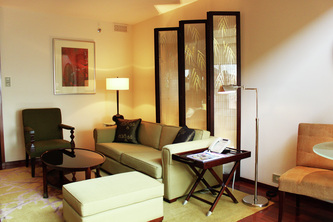

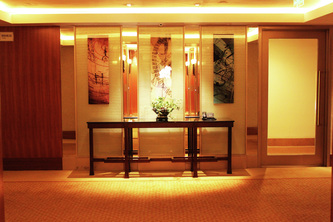




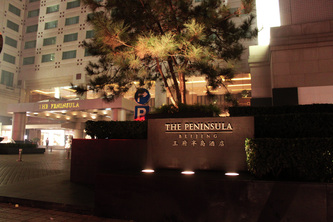

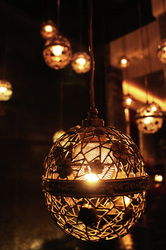
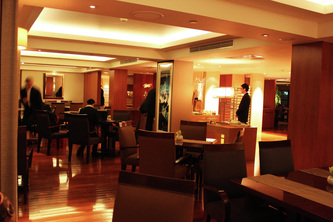




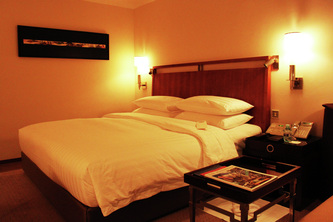











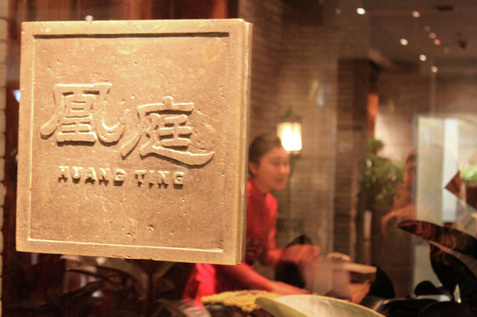
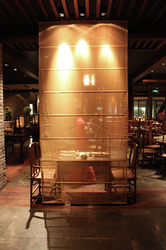
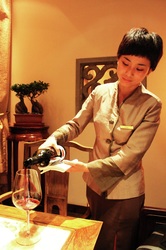










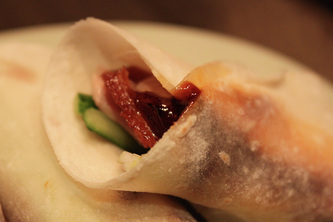

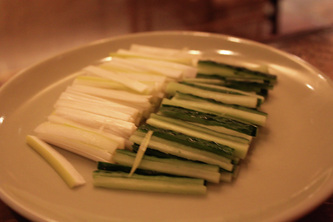
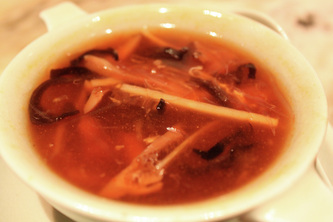



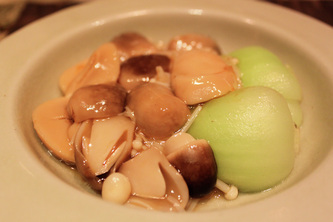










 RSS Feed
RSS Feed


